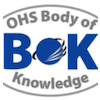Abstract
This chapter – one of three dedicated to psychosocial hazards – presents key concepts related to workplace bullying, aggression and violence. Since the 1990s, research on these issues has proliferated along with increasing awareness of associated health and safety problems and organisational effectiveness detriments. This chapter provides the Occupational Health and Safety (OHS) professional with information on the potential outcomes of workplace bullying, aggression and violence for individuals and organisations, useful conceptual models, the legislative environment, and risk assessment and control fundamentals. It considers the implications for OHS practice and highlights the importance for generalist OHS professionals to seek specialist advice on matters such as mediation and complaint investigation.
Keywords: bullying, aggression, violence, psychosocial
First year of publication: 2012
Current Version Pending Review: 2021
Table of contents
| 1 | Definitions |
| 2 | Historical Content |
| 3 | Extent of the problem |
| 4 | Understanding workplace bullying, aggression and violence |
| 4.1 | Potential health and wellbeing outcomes |
| 4.2 | Potential organisational outcomes |
| 4.3 | Frameworks for workplace bullying, aggression and violence |
| 5 | Legislation and standards |
| 6.1 | Workplace bullying |
| 6.2 | Aggression and violence |
| 7 | Risk control methods |
| 7.1 | Bullying |
| 7.2 | Violence |
| 8 | Implications for OHS Practice |
| 8.1 | Management systems implications |
| 8.2 | HR management implications |
| 8.3 | Specialist Support |
| 9 | Summary |
| Key authors and thinkers | |
| References |
Purchase the AUDIO chapter here through AIHS
OR

Carlo Caponecchia BA(Psych) Hons, PhD
Senior Lecturer, School of Aviation, University of New South Wales
Carlo teaches safety and risk management at the University of NSW. His research interests are in human factors and safety including psychosocial hazards, risk perception and management. He is a member of the Human Factors and Ergonomics Society of Australia and current President of the International Association on Workplace Bullying and Harassment (IAWBH). He is a member of the Standards Australia Technical Panel SF-001, which is responsible for occupational health and safety management systems standards, and a representative on the ISO Technical Committee TC283 (responsible for standards including ISO45001 and ISO45003). Carlo provides expert opinion reports to court in relation to psychosocial issues and the provision of safe systems of work, as well as research and consultancy services across a range of industries.

Kïrsten A Way B.OccThy; B.A (Psych Hons); CPErg;
MAPS. School of Psychology, University of Queensland
Kïrsten Way is a Senior Lecturer and Program Director at the Centre for Business and Organisational Psychology at UQ where she conducts research on safety, the role of supervisors in conflict, psychosocial hazards, occupational stress, fatigue, injury management, and occupational health and wellbeing. Dr. Way is an Organisational Psychologist, Occupational Therapist and Certified Professional Ergonomist. She specialises in the study of worker and group-level psychology and its influence on various aspects of organisational performance, but in particular, work health and safety (WHS) and injury management. She has expertise in work design and occupational health including workplace bullying, work-related mental health, workplace stress, work-related fatigue, human factors and ergonomics, and MSDs. She has significant industry expertise having worked as the Director of a private consultancy specialising in WHS and organisational psychology and having held positions for Australian and UK WHS regulatory authorities, including Principal Inspector (Ergonomics), Manager Psychosocial Strategy Unit, and Manager WHS Policy Branch. She has provided expertise to the Australian and UK Governments to assist in the development of both the NSW Mentally Healthy Workplaces Benchmarking Tool and The NSW Mentally Healthy Workplaces Strategy 2018-2022 and has contributed to writing both The Workplace Harassment Code of Practice (Qld) and The National Guidance on Work-Related Psychological Health and Safety.
Learning Outcomes: Psychosocial Hazards: Bullying, Aggression and Violence
The OHS Body of Knowledge takes a conceptual approach which enables it to be applied in different contexts and frameworks.
To optimise its value for education and professional development learning outcomes have been developed for each technical chapter in the Body of Knowledge.
The learning outcomes as described give an indication of what should be the capabilities of an OHS professional; it is up to those developing OHS education programs, OHS professionals planning their CPD or recruiters or employers selecting or developing people for the OHS function to consider the required breadth vs. depth .
Please read the section on using the learning outcomes before delving into the leaning outcomes of the individual chapters.
The numbers against each learning outcome refer to the chapter number of the BOK download page. No learning outcomes have been developed for the chapters considered introductory or underpinning knowledge (that is chapters 1, 2, 3, 4, 5, 6, 7, 1, .13, 14, 15.)
Videos
SWA videos: Building a bullying-free workplace
Instead of managing personalities or interpersonal conflicts, proactively change organisational culture.
Date: 2017
Presenter/s: Panel
Source: https://www.safeworkaustralia.gov.au/media-centre/building-bully-free-workplace
Webinars
AIHS Webinar: Introduction to workplace Bullying Investigation
This webinar will provide an outline of the steps involved in a procedurally fair workplace bullying investigation
Date: 2018
Presenter/s: Jason Clark
Source: https://www.youtube.com/watch?v=v_FQSqrUgRc&t=1s
AIHS Webinar: Practical strategies for violence prevention
This webinar reports on the implementation of tailored occupational violence prevention specifically designed to support paramedics. It focuses on developing positive protective behavioural practices to build confidence and improve safety outcomes, both psychological and physical. The program also incorporates risk assessment and communication skills at a practical level. Although an example of one violence prevention program, these concepts have been applied in a broader context to a range of organisations who undertaking work in unpredictable and volatile environments particularly when working in the community and often employ younger workers who are particularly vulnerable.
Date: 2020
Presenter/s: Panel
Source: https://www.youtube.com/watch?v=mjsvS9Lj9RE

